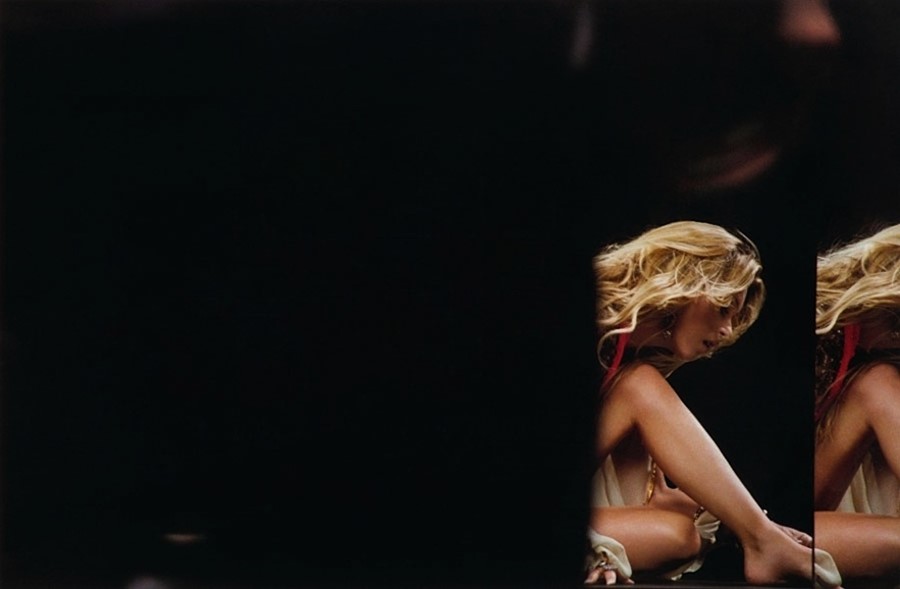A conversation with Jerry Stafford, writer, creative director at the French production company Première-Heure and consultant to Tilda Swinton (not to mention keen ornithologist) is like surfing a wave...
A conversation with Jerry Stafford, writer, creative director at the French production company Première-Heure and consultant to Tilda Swinton (not to mention keen ornithologist) is like surfing a wave: you never know where you might end up. He talks nineteen to the dozen, peppering his anecdotes with priceless glimpses of a life lived to the full. On his musical epiphany: “My first real cultural hero was David Bowie. When I went to see Bowie in 1976 perform Station to Station at the Empire Pool in Wembley, it was the moment when punk and Bowie came together for me. And it was full steam from there.” On the London 80s club scene that revolved around Leigh Bowery and Taboo: “It’s all a bit of a blur to be honest – an out of focus photograph. Taboo was the culmination of the narcissism that had reigned at the time and both punk and the New Romantic club scene were very narcissistic movements.”
“I always take the artist’s own work as a starting point and go from there"
Following a childhood in “the birthplace of punk”, Bromley; Stafford spent his early career working as an art director and stylist to John Maybury (notably on Sinead O’ Connor’s timeless video for Nothing Compares 2 U) and as a booker at the leftfield Z Agency (where Melanie Ward paired Kate Moss and Corinne Day for the cover of The Face) before moving to Paris to work as creative director of Première-Heure. There, the film projects he creative directs are often breathtaking in their ambition: more than just fashion films, they seek to explore new technologies and ideas. A trip to Bhutan became the germ of the idea behind casting Kate Moss as a seductive Eastern goddess in the groundbreaking KM3D-1 for AnOther, which also took inspiration from Kenneth Anger and the stop motion pioneer Ray Harryhausen. Likewise for W magazine, he and director Sølve Sundsbø concocted a moving version of the Surrealist parlour game, Exquisite Corpses – morphing Lara Stone into new anthropomorphic forms which were subsequently projected onto 16ft screens at the Armory during New York Fashion Week. Whether working with Bailie Walsh for AnOther or Sundsbø, Stafford has an unerring talent for aligning the right creative to the right project, saying, “I always take the artist’s own work as a starting point and go from there.”
On his plate are a host of exciting new ventures (a film with Sam Taylor Wood for H&M, a fashion film for the designer Antony Price’s LFW comeback in October) but his most enduring collaboration may well be with the actress Tilda Swinton, who first called upon his services to style her for promotional duties on The Beach back in 2000. Through Stafford, Swinton has met Viktor & Rolf, Alber Elbaz, Raf Simons and Haider Ackermann. “On many levels, Tilda has come to a lot of things later in her life so I’ve been a conduit for her to experience things in another way,” says Stafford. “I’m happy to share with her many things. It’s lovely to see her shed another skin and openly embrace change.” He’s also been instrumental in her editorial shoots which often take on aspects of performance art: “We put the barrier very high and we always want to do the best job. To do something special and take it to another level.” Most recently they collaborated on a 28-page portfolio for Candy Magazine that cast Swinton as a strange hybrid of Bowie (circa his “Boys Keep Swinging” video) and the trans pioneer, April Ashley. Explains Stafford, “Candy is all about transgender and transformation – all themes Tilda has explored in her work and personal projects. We really had carte blanche to do what we like so it was a great opportunity to explore this field of interest.” For Stafford, Swinton’s chameleonic ability to transform herself is akin to some kind of black magic: “She’s more comfortable when she plays another character than when she's playing herself. She’s always been interested in some sort of metamorphosis or transgression, some sort of play with masks. She’s a natural shapeshifter. She’s got that fluidity. It’s almost a witchery really.”
